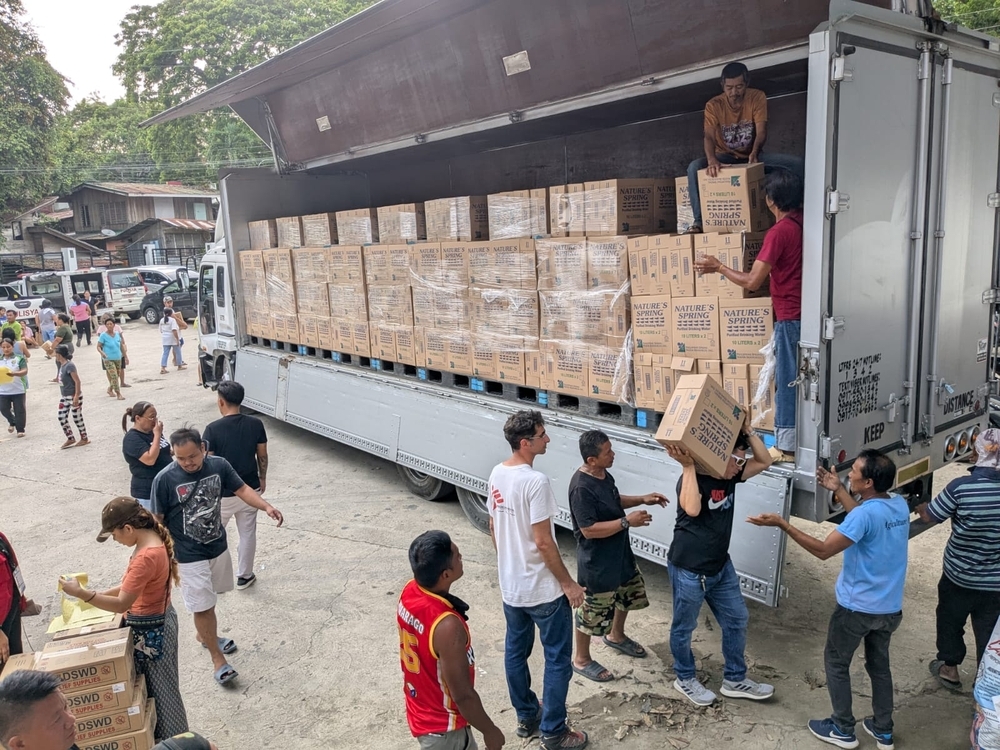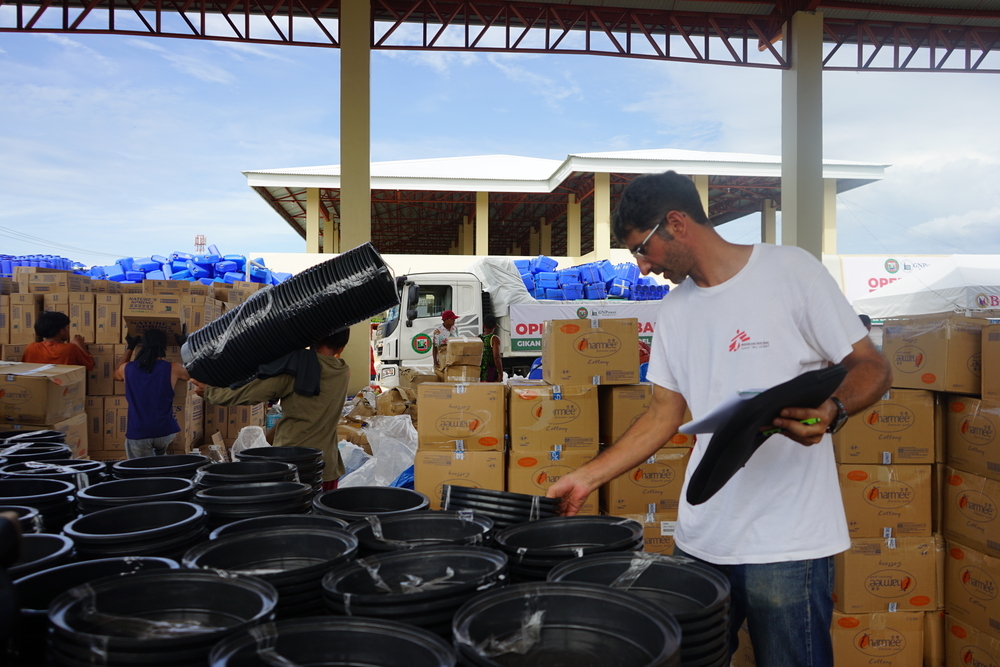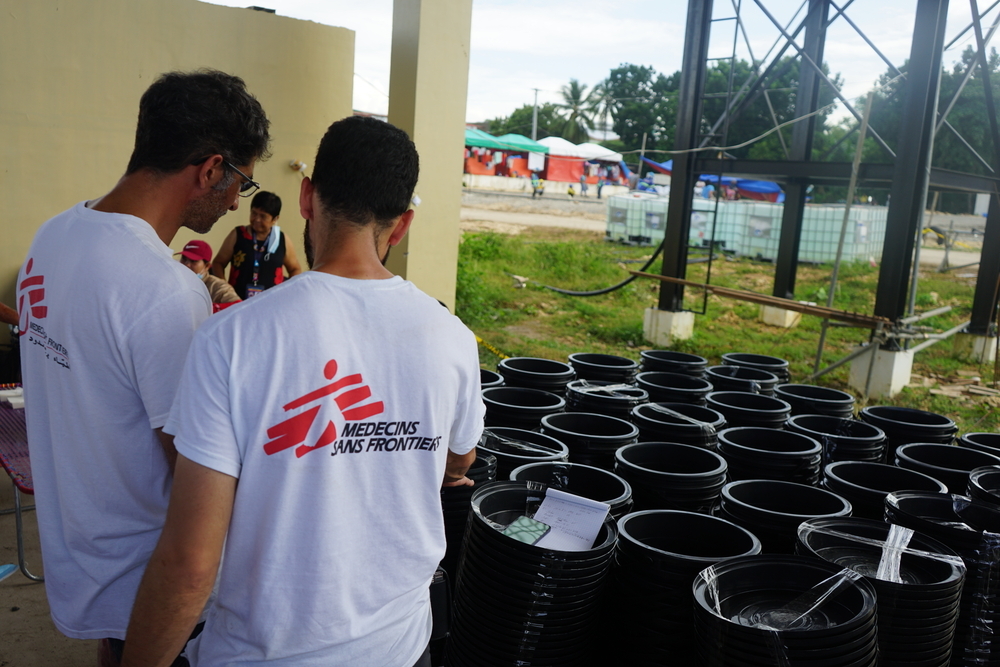On 30 September, a powerful 6.9 magnitude earthquake struck central Philippines, claiming at least 76 lives and injuring hundreds more. Cebu province was hardest hit, with Bogo City—closest to the epicentre—bearing the brunt of the devastation. A Doctors Without Borders / Medecins Sans Frontieres team arrived in Bogo on October 1 and immediately began assessments.
Rapid assessment in six municipalities
The team visited hospitals and assessed needs for medicine, mental health, shelter, and water. Ken Hagiwara, Emergency Coordinator, said, “Within one day of our arrival, we did an intensive rapid assessment of the municipalities surrounding Bogo: Daanbantayan, Medellin, San Remigio, Tabuelan, and Borbon. We spoke to local officials, assessing the impact on local hospitals and the health system.”
Both provincial and district hospitals were inundated with patients. Highly severe cases were transferred to other hospitals in unaffected areas. Meanwhile the hospitals were intensively augmented with medical professionals and medical and non-medical supplies. Even after the buildings were inspected for structural integrity, many patients still remained outside the buildings due to fear of continuous aftershocks. Operations at the provincial hospital resumed within days after the building was inspected for structural integrity. Needs for food, safe water, mental health and relief items including shelter items were high. Though various local and international organisations, both government and private, quickly arrived to provide support, the needs were immense and aid could not quickly reach all affected areas.
Bogo City reported at least 32 casualties and dozens injured. There was also much structural damage to homes, public buildings and roads. Infrastructure damage has been estimated at over Php 6.7million.
The MSF assessment team found significant damage to local infrastructure, cutting off access to safe drinking water and electricity. Water treatment facilities and pipelines were damaged, and these could not easily be repaired within a few days. While multiple relief operations were launched in the city, repair of water infrastructure would take time and effort to reach rural, far-flung barangays (communities).

Working hand-in-hand with remote rural communities
In coordination with local government officials, MSF identified 13 barangays in 4 municipalities that could be supported with donations of water, hygiene kits and jerrycans.
Most of these barangays were in hard-to-reach areas of Cebu province, and delivering aid proved to be a challenge. Though debris from landslides has been cleared, the roads leading to many barangays were narrow or passed through steep slopes and farmland. Continuous aftershocks, roads blocked by boulders, and sinkholes were also serious concerns for the team in terms of safety.
In all these communities, local officials and volunteers worked closely with MSF to make sure the aid would reach the communities in need.
In the municipality of San Remigio, local officials supported MSF by identifying the communities in most need of aid, providing trucks and volunteers to load and transport water, jerrycans and hygiene kits.
In Brgy. Sab-A, San Remigio, community officials, barangay health workers and volunteers assembled hygiene kits and made sure the donations reached the community’s 530 households. Barangay captain Giovanni Singuran said, “MSF is the first organisation to make sure every household in our barangay gets aid.”

In the municipality of Borbon, community officials and volunteers worked with MSF in loading trucks going to different communities, coordinated with barangay officials, and navigated routes for the safe passage of the heavy trucks.
Bongoyan, a Borbon community of approximately 461 households, is located in a mountainous and heavily wooded area, where the roads are so narrow that the large truck used by MSF could not pass through. The community brought small pickup trucks to a drop-off point. They then began offloading the large truck by queuing up and forming a human conveyor belt, passing jerrycans and hygiene kits hand-to-hand to the waiting vehicles. In Daanbantayan, the barangay of Malbago did not have space to receive four container trucks of aid. The local officials coordinated with the nearby municipality of Medellin to find space for the container trucks, and volunteers from Malbago worked on transferring the donations to their small trucks, which delivered the jerrycans and hygiene kits to their community.
Trauma, mental health and other needs remain
Though most of the deaths from the September 30 earthquake were in Bogo City, the communities supported by MSF were also affected. The earthquake occurred at around 10:00 in the evening, when many people were asleep and unable to evacuate quickly.
Chelito Maitem was a volunteer in Brgy. Bili, Borbon. He shared the story of his relatives, Dioclesiano and Rhodora Urot, who were in their two-storey house when the earthquake happened. Rhodora, 67 years old, was asleep on the ground floor, which completely collapsed during the earthquake. Rescuers could not pull her out, and she died before they could remove the rubble that crushed her. Her husband Dioclesiano sustained only minor injuries and survived.

Barangay captain Giovanni Singuran told a similar story in Brgy. Sab-A, San Remigio: an elderly couple in their community was asleep, and unable to evacuate before their house collapsed during the earthquake.
Though these particular communities saw few deaths, their fear and trauma remain. Many families choose to stay in tents and temporary shelters due to trauma and fears of aftershocks, thousands of which occurred for at least a week after the earthquake.
At 1:06 am on October 12, there was a magnitude 5.8 earthquake in Bogo City, which the Philippine Institute of Volcanology and Seismology (PHIVOLCS) later said was an aftershock of the September 30 earthquake. Once again families fled their homes, fearing death and destruction. “My children were crying and shaking all over again,” said one woman in Daanbantayan. “Our house is just made of light materials, and it could fall apart so easily.”
The local government units of northern Cebu were quick to provide mental health and psychosocial support (MHPSS) to affected communities, and MSF supplemented this with technical advice and support in Borbon and Daanbantayan. In Medellin, MSF also conducted a psychosocial support session for the female inmates of the district jail. MSF’s mental health support reached a total of 359 people.
MSF is ending its intervention just as the affected communities are beginning their recovery. “Obviously there are still needs on the ground,” Hagiwara said. “Always we must be in dialogue with the community, because we are responding to their needs. We came to support them, but in reality, in this emergency, they supported us.”












